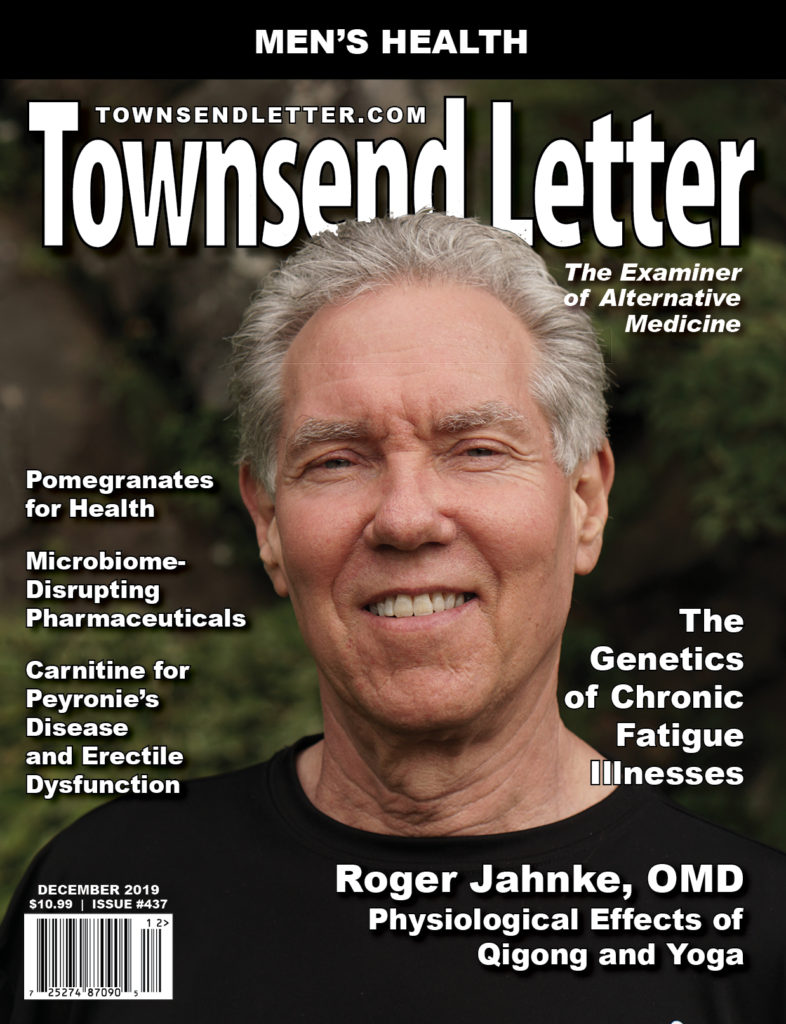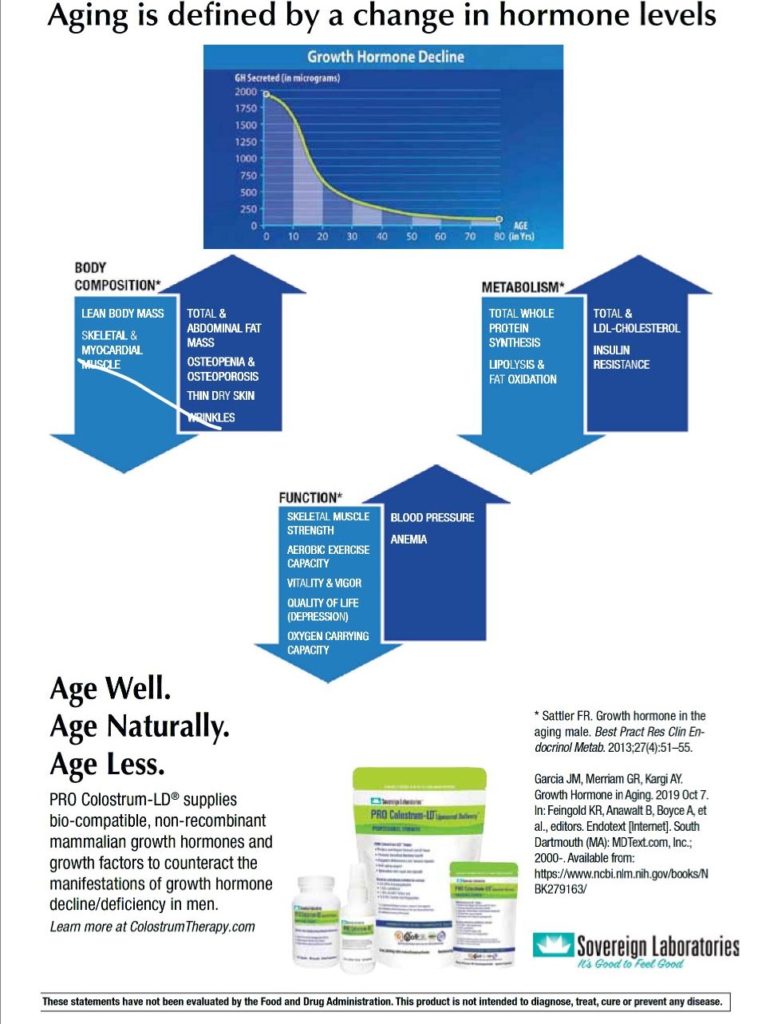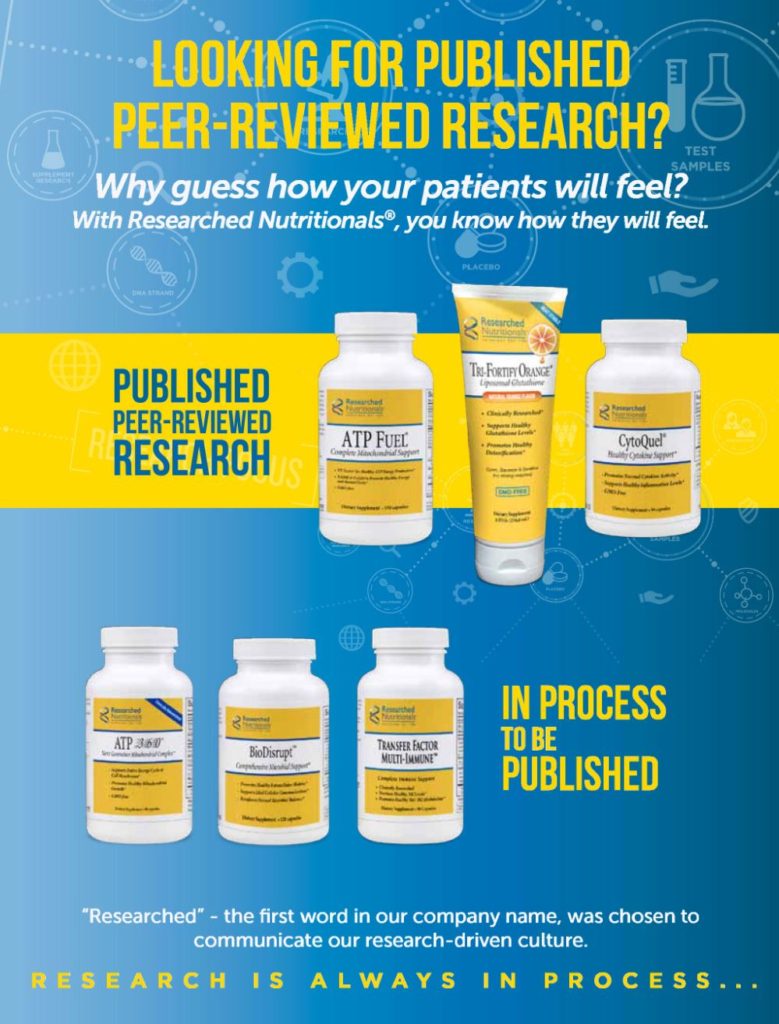
Issue #437
by Roger Jahnke, OMD,
and Nancy Faass, MSW, MPH
Qigong and yoga are ancient methodologies developed and refined over thousands of years, designed to sustain the inherent healing systems of the body by maximizing restorative energies, termed chi or qi in China and prana in India. Research indicates that these therapeutic practices promote a range of beneficial physiological effects involving mechanisms currently well understood in Western biomedicine (Oschman, 2000; Jahnke, 2002).
Reviews of clinical studies on qigong and tai chi have reported improvement in the management of cardiovascular, respiratory, musculoskeletal, and immune function and pain disorders, as well as improved muscular strength, stamina, posture, flexibility, balance, and mood (Li et al, 2001; Klein & Adams, 2004; Wang et al, 2004). Therapeutic exercise also enhances the production and delivery of co-enzymes and antioxidants, connective tissue repair, and the enhancement of stem cell development. Ongoing research promises to further clarify these effects.
Clinical Research
The National Library of Medicine Medline database currently lists 167 clinical trials on qigong, and 429 on tai chi (the most well-known form of qigong), and at least 400 of these studies have been performed in the past ten years. This surge of new research has focused not on stress or relaxation, but on the leading causes of premature morbidity and mortality in our time – heart disease, cancer, respiratory disease, stroke, Alzheimer’s disease, diabetes, kidney disease, and obesity. Recent clinical trials on qigong have explored specific applications in disease management.
Heart disease. A study conducted in Taiwan involving 100 patients with a history of heart failure evaluated the benefits of qigong for these patients. Researchers found that those practicing Chan-Chuang qigong achieved significantly greater improvement than the control group in terms of six-minute walk distance and quality of life at two, four, and 12 weeks after the intervention and depression at 12 weeks after the intervention. (Note that participants’ ability to walk and their quality of life had begun to improve by the two-week evaluation, but changes in depression were not reported until the 12-week evaluation).1
Breast cancer. Randomized research at a Chinese university hospital evaluated 86 breast cancer survivors to assess the benefits of qigong. After six months of intervention, heart rate variability and shoulder range of motion were significantly improved in the Baduanjin qigong group, compared to the control group. There were also significant improvements in depression, QoL (quality of life), and four QoL dimension scores (physical well-being, social well-being, functional well-being, and breast cancer subscale).2
Cancer survivors. A five-center clinical trial in Shanghai enlisted cancer survivors to explore the benefits of a 21-day intervention that provided supportive-expressive group participation, cognitive-behavioral therapy (CBT), and Guolin Qigong in tandem. A total of 388 cancer patients were enrolled to either receive the 21-day intervention (n = 129) or a waiting-list comparison (n = 259). The intervention group showed significant improvements in the QoL score. However, there were no clinically relevant changes in subscales of emotional, cognitive, or physical functioning, pain, or insomnia. (It would be interesting to see the response to those measures at 240 days in comparison with the 21-day outcomes. A six-month study pairing CBT and qigong is summarized below).3
Housebound elders. A joint study by two Chinese universities evaluated the progress of 120 housebound elders who were randomly assigned to one of three interventions: Baduanjin qigong training, qigong combined with CBT, or CBT alone. Interventions were conducted by means of home visits over six months. Quality of life (QoL) and self-reported health status were significantly improved in the qigong-and-CBT group as compared to the qigong-only group or the CBT-only group. Participants reported less difficulty with activities of daily living (ADL); and loneliness and depression were significantly lowered in the group receiving joint qigong-and-CBT intervention (at both 3 months and 6 months), as compared to the qigong-only group or the CBT-only group.4
Breast cancer survivors with decreased cognitive function. A randomized interventional pilot conducted at five centers in Kansas City and Pittsburgh compared 1) qigong, 2) gentle exercise, and 3) survivorship support. Participant self-report of cognitive function improvement was greatest for those in the qigong group, who also indicated the most reduction in distress.5
Diabetes and obesity. A recent Chinese study evaluated 40 middle-aged female obese diabetic patients (average age 57 years old), randomly divided into a control group and an exercise group (n=20). The fitness training group performed eight new Baduanjin qigong exercises for 24 weeks, whereas the control group did not exercise. Qigong was found to reduce blood sugar and blood lipid indicators of obese patients with diabetes. After the intervention, the waist measurements, waist-to-hip ratio, and levels of triglycerides, HbA1c, HDL, and retinol-binding protein (a marker for insulin resistance) in the experimental group were decreased significantly compared with their test results before the intervention.6
Obstructive sleep apnea. A Turkish study conducted at four medical centers tracked the effect of qigong and tai chi (a form of qigong) on patients with obstructive sleep apnea in a randomized controlled study. In the intervention group, there was a statistically significant decrease in the apnea-hypopnea index and in percentage and duration of stage N2 sleep, as well as an increase in percentage and duration of stage N3 sleep when compared with the controls.7
Healthy aging in midlife. A pilot study performed in Austria examined the effects of qigong in 12 subjects (average age 52 years) who performed qigong for eight weeks (60-minute sessions, 3 times/week). Part 2 of the study evaluated the detraining effects 12 weeks after cessation of qigong. These results suggest that performing qigong exercise effectively improved attention, brain processing speed, blood pressure, and maximal workload. However, these improvements disappeared 12 weeks after cessation of qigong. Consequently, performing qigong regularly is important in order to maintain related health effects.8
Parkinson’s disease. Researchers at a Korean university hospital evaluated the benefits of qigong for Parkinson’s disease patients applying a randomized, waiting-list control design. Participants were assigned to a group performing Turo (qi dance) or a waiting-list group. The qi dance group showed statistically significant improvements on the Unified Parkinson’s Disease Rating Scale and Parkinson’s Disease Quality of Life questionnaire as compared to the control group.9
Attention deficit and behavioral disorders in children. A pilot study conducted in Portugal evaluated the efficacy of Taiji Quan and qigong for four children (ages 6 to 10) suffering from attention deficit hyperactivity disorder (ADHD), oppositional defiant disorder (ODD) and conduct disorder (CD). Researchers reported:
Results showed very interesting improvements in symptoms of CD, ODD and ADHD-HI (hyperactive-impulsive), while ADHD-PI (predominantly inattentive) showed only minor improvements. The overall symptom improvement was 43% across pathologies, which demonstrates that Taiji Quan and qigong may be promising treatment for behavioral disorders.10
Mechanisms of Action
When the goal is to mobilize healing capacity or reduce health risk, research suggests that moderate exercise is often preferable to vigorous exercise (Blair et al., 1995). To contrast therapeutic exercise such as qigong with more vigorous aerobic exercise such as running and cycling, it is useful to trace the oxidation and energy cycle, lymphatic function, and neurological activity.
Oxygen
In both vigorous and moderate exercise, the body produces a powerful mix of metabolic resources. However, in vigorous exercise, this energy production serves as endogenous fuel to support muscle activity and is spent to feed hungry muscles. In the less intense fitness systems of ancient cultures, this inner resource has historically been considered therapeutic or medicinal and is conserved, so it can be circulated throughout the body as an internal healing resource referred to in ancient China as “the inner medicine” or “the healer within.” This resource is not completely expended but is circulated internally and utilized as a reserve of self-repair factors to sustain and heal tissues, organs, and glands in support of optimal function, recovery, and longevity. Increased oxygen availability from the practice of therapeutic exercise offers at least three potential benefits:
· Support for energy production,
· Cellular and intracellular hydration, as a by-product of energy metabolism, and
· Enhanced immune function.
Energy production. The energy necessary to fuel cellular processes and regulate body heat is supplied through the metabolic interaction of oxygen and glucose in the presence of ATP (adenosine triphosphate), which serves as a catalyst in the release of energy, obviously a critical factor in vitality and stamina. In contemporary Chinese research it has been observed that blood levels of ATP increase with therapeutic practices such as qigong, which efficiently activates the Krebs cycle (Wang et al, 1988).
Hydration. A second critical benefit of increased oxygen metabolism is linked to the cellular metabolism of water as a byproduct of the Krebs cycle (Shields, 1990). Through this process, water is incorporated into various types of fluids throughout the body, including lymph, blood, serum, cerebrospinal fluid, synovial fluid, tears, and perspiration. This internal hydration supports a range of immune and repair functions, particularly those associated with the lymphatics. Both the production and circulation of this fluid are increased in therapeutic mind-body exercises.
Oxygen and immune function. The scientific evidence indicates that immune function is dependent on oxygen. Mild to moderate exercise (including breathing exercise) has been found to increase immune function, mobilizing natural killer cells (Pedersen et al, 1988), production of white blood cells and lymphocytes (Lee et al, 2003a), favorable T-cell ratios (Yao, 1989), and increased production of interleukin-4 (Carlson et al, 2003).
Immune function is decreased in individuals who exercise so vigorously that they exceed aerobic levels and cross the anaerobic threshold (Brahmi et al, 1985). Reduced lung volume and oxygen capacity are associated with less resistance to disease and increased risk of mortality (Gordon & Kannel, 1970; Cullen et al, 1983). In studies of elderly patients, for example, reduced oxygen metabolism was associated with immunodeficiency (Saltzman & Peterson, 1987). Oxygen deficiency has also been implicated in a range of disorders, including cancer cell proliferation, confirmed in the research of Nobel Prize recipient Otto Warburg (1966). Therapeutically, relaxation and breathing exercises as in yoga have been found beneficial for patients with lung cancer (Corner et al, 1996).
Lymphatic System
The human body contains approximately 500 to 600 lymph nodes with clusters found in the neck, chest, underarms, abdomen, and groin. We now know that physical activity and deepened breathing enhance circulation and function of the lymphatic system through a number of beneficial mechanisms:
· Lymph generation and propulsion,
· Circulation of cerebrospinal fluid,
· Transport of nutrients, and
· Support for immune function.
Lymph generation. A significant portion of the water in the body’s fluids is produced by the same physiological process that generates the body’s biological energy (Shields, 1980). For each gram of glucose metabolized, in excess of a gram of water is produced. In a moderately active human weighing about 155 pounds (70 kg), engaging in therapeutic exercise such as qigong, yoga, or walking can produce as much as 1400 cc (1.5 quarts) of additional aerobically generated fluid daily (Shields, 1972). With moderate physical activity, as much as one half of the water propelled through the lymph system is a by-product of cellular metabolism, accelerating the elimination of metabolic by-products and bacterial toxins, and increasing the circulation of immune factors.
Lymph propulsion. The lymph system has no distinct heart in humans. (Interestingly, both birds and reptiles have a specific lymph heart, per Shields, 1980.) In humans, the lymph is propelled by a composite lymph heart; and circulation of lymph against gravity is accomplished by the contraction of skeletal muscles, propelling the lymph through the lymphatic vessels via one-way valves. “Spontaneous, intrinsic pulsator contraction of the peripheral lymphatic vessels” has been demonstrated in humans (Smith, 1949; Reimenschneider & Shields, 1981), which occurs through several mechanisms:
1. Aerobic propulsion. Fluid volume and holding capacity of interstitial spaces between the cells are naturally limited. As that limit is reached, due to aerobic production of water, the overflow drives the excess fluid into terminal lymphatic vessels (Yoffe & Courtice, 1970; Shields, 1980; Adair & Guyton, 1985; Olszewski, 1985). Like a cup that is running over, the interstitial space fills, building volume and pressure, and then flows over into the lymphatics.
2. Intrinsic smooth-muscle contraction. Within the lymphatic vessels and peripheral lymphatic capillaries, the autonomic response of smooth muscle tissue is to contract when filled and stretched to a certain tolerance (Olszewski, 1985). This contraction moves the lymph forward through the lymphatic vessels. Functioning as a systemic pump, this mechanism acts in a manner similar to the contractions of the heart as it pumps blood through the arteries (Bradbury & Cserr, 1985).
3. Striated skeletal-muscle contraction. Even slight contractions of the skeletal muscles propel the lymph through this unidirectional system. During aerobic exercise, the pumping of the skeletal muscles and compression of the tissues increase the flow of interstitial fluid. In contrast, in qigong and yoga, this mechanism is triggered by relaxation and contraction of striated muscles through purposeful patterns of movement entailed in these practices.
4. Gravitational propulsion. An inversion of the limbs or lying in the prone position allows for freer flow of lymph due to the reduced force of gravity. This is one of the reasons that elevation of the limbs is frequently prescribed for health problems characterized by pooling of the interstitial fluids (edema). In therapeutic practices, various postures and movements create this dynamic, promoting the circulation of lymph by gravity. For example, in certain walking forms of qigong (tai chi and guo lin qigong are the most well-known), the individual moves all the limbs in beautiful circular motions, slowly and continuously, to activate this inversion mechanism. In yoga, a number of the postures (asanas) invert the limbs: for example, in both the head stand and shoulder stand almost the entire body is inverted.
5. Mechanical lymph propulsion through the process of breathing. One of the most powerful aspects of the lymph heart mechanism occurs through the action of the lungs and diaphragm (Shields, 1980). Located below the diaphragm is a substantial, expanded portion of lymphoid tissue known as the cisterna chyli. This cistern-like structure collects lymph from multiple incoming lymphatic vessels in an expanded balloon-like area of the vessel, which functions as a holding chamber, with the most substantial accumulation of lymph anywhere in the body. Another major repository of lymph fluid is concentrated in sponge-like webs of lymphoid tissue throughout the abdominal organs. With the downward movement of the diaphragm, particularly in deeper breathing, a wave of lymphatic fluid is compressed from the cisterna chyli and the sponge-like webs of tissue. This lymph is moved forward in the system through the one-way valves in the lymphatic vessels and propelled upward into the thoracic duct (Adair & Guyton, 1985).
6. Transformation. The thoracic duct collects lymph from the organs within the rib cage and from lymph-rich areas in the abdominal cavity. Lymphatic fluid accumulates centrally and is then propelled by the action of the diaphragm and the lungs in a final rush through the thoracic lymph duct into the blood at the subclavian vein. There it merges with blood to become a component of blood serum (Shields, 1980). The lymph-borne by-products of metabolism are then detoxified in the liver, filtered through the kidneys, and discharged from the body in bile and urine.
Lymph and immune function. The role of the lymphatic system in immune activity is well documented in the scientific literature (Drinker & Yoffe, 1941; Bradbury & Cserr, 1985; Olszewki, 1985; Van Rooijen, 1987). Lymph delivers immune cells originating from a number of sources:
· Transported to the lymph from immunogenic tissues and organs (spleen, thymus, and bone marrow),
· Exchanged from blood circulating through the lymph nodes, and
· Formed within the lymph nodes themselves (Bradbury & Cserr, 1985).
Qigong and yoga mobilize the body’s self-regulatory systems required for healing and good health.
Lymph contents include lymphocytes, macrophages, and antibodies (Olszewski, 1985). Both qigong (Lee et al, 2004) and yoga (Lee et al, 2003a) have been found to increase levels of these immune components. Further, when lymph flow or volume is increased, greater numbers of these cells are diffused into the system (Adair & Guyton, 1985).
· Immune modulation. A review of clinical trials on qigong reported a range of immune modulating effects. The results were particularly noteworthy when participants sustained the practice for a period of five months or longer (Ryu, 1995a).
· Lymphocytes. The concentration and functionality of lymphocytes, monocytes, and neutrophils have been found to increase following qigong training (Lee et al, 2003b & 2004). We also know that neurotransmitter receptor sites on lymphocytes interface with neuropeptides that drive immune function (Smith et al, 1985). This reflects an important link between lymphatic function, neurochemistry, and neuroimmunity.
· CD4/CD8 ratios. A review of clinical trials on qigong and immunity reported on four studies in which the number of CD4 lymphocytes were significantly increased and CD4+/CD8+ ratios were significantly improved (Ryu et al, 1995a; Yao, 1989; Lee et al, 2006; Yu & Wang, 2007).
· Antibodies. The development of antibody-generating cells in lymph nodes has been delineated, localized, and quantified in the research (Van Rooijen, 1987). Clinical studies found that both qigong and meditation supported desired increases in antibody titers in response to a vaccine (Ryu et al, 1995a; Davidson et al, 2003). Two more recent studies of qigong practice reported increases in secretory IgA levels (Bayat-Movahed et al, 2008), one also documenting decreased salivary cortisol (Chan et al, 2013).
The pathological presence of leucocytes is comparable to the pathological absence of leucocytes – a deficiency of functional capacity. Thus, according to the paradigms of Chinese medicine, when the individual implements qigong, the practice will optimize function. Performed with intelligence and moderation, health enhancement practices increase functional potential. Similarly, the fact that one person has too many antibodies and another person has too few does not have an impact on the potential for the practice to enhance functional capacity in both parties. The effect is ultimately adaptogenic.
Circulation of cerebrospinal fluid. Historically, cerebrospinal fluid (CSF) was perceived as a closed system. However, it has been acknowledged for several decades that CSF travels along the cranial and spinal nerves and into the perineural lymphatics (Kimber & Kimber, 1977; Bradbury & Cserr, 1985). The effects of pressure and posture on this flow suggest that certain types of movement, postural adjustment, and deep breathing activate the CSF/lymphatic interaction (Bradbury & Cserr, 1985).
Nutritive function. The role of the lymphatic system in the delivery of nutrients was little known before 1972 (Shields, 1972). More recent findings indicate that the lacteals in the small intestine mediate this nutritive mechanism (Adair & Guyton, 1985). Chyle (milky fluid with high nutrient contents) is absorbed from chyme in the small bowel and then passed into the circulating blood. During deep inspiration, diaphragmatic activity appears to significantly improve the function of the cysterna chyli and abdominal organs and enhance absorption in the small intestine. In traditional Asian systems of medicine and self-care, breath practice and therapeutic exercise are enlisted to improve circulation and the absorption of micronutrients from therapeutic diet and medicinal herbal formulas. Therapeutic practices such as qigong maximize the nutrifying potential of lymphatic fluid by increasing volume and flow rates of the lymph. In individuals whose health is compromised, these functions can be enhanced through therapeutic exercise such as qigong (Lee et al, 2003b, 2004).
Neurological Function
Traditional healing systems emphasize the restoration of homeostasis. In Chinese medicine, the importance of equilibrium between the sympathetic and parasympathetic systems is conveyed in the metaphor of energy balance (yin and yang). Research on mind-body practices suggest that this equilibrium enhances neurological function through a number of mechanisms, including the following:
· Initiation of the relaxation response,
· Shift to a more beneficial neurotransmitter profile,
· Increased microcirculation,
· Support for neurological aspects of immune function, and
· Promotion of alpha/theta brain wave activity.
Initiation of the relaxation response. When the autonomic nervous system is primarily in the sympathetic, adrenergic mode, the system is expending rather than conserving energy. In the extreme, this is the stress response with increased heart rate, blood pressure, and breathing. Catabolic activity can occur in this mode, associated with elevated cortisol levels (Girod & Brotman, 2004). The stress response, if protracted, can lead to adrenal dysfunction (Selye, 1978) or hypothalamic-pituitary-adrenal dysregulation (Kresser, 2017). Potential clinical consequences of biological stress include functional disorders such as depression, hypertension, arrythmias, immune deficiency, and/or inflammation (Benson, 1975).
Balancing sympathetic activity is the parasympathetic (cholinergic) phase of rest and repair, also described as the relaxation response (Benson, 1975). This conservative, anabolic repair phase of metabolism is characterized by decreased blood pressure and heart and breath rate, which can neutralize the potentially harmful effects of sympathetic overactivity. The parasympathetic profile can be engaged consciously, simply through deep, slow breathing coupled with the intention to relax (Benson, 1975). Traditional Asian health maintenance practices also provide effective techniques for generating the relaxation response (Benson, 1975; Chang et al, 2004) and the biofeedback response (Green & Green, 1977), normalizing blood pressure and heart rate (Lee et al, 2003b).
Improved neurotransmitter profile. Certain characteristic profiles of neurotransmitter dominance are typically associated with mood states such as pain, anxiety, or depression (Lechin et al, 1996), in contrast to profiles associated with positive emotions (Ornstein & Sobel, 1987; Rein et al, 1995). Research indicates that therapeutic mind-body exercise can promote a more favorable neurotransmitter profile, moderating sympathetic function through the hypothalamus, characterized by decreased norepinephrine, and elevated cholinesterase and beta endorphins (Brown et al, 1995), as well as elevated melatonin. The neurotransmitter profile of the predominantly parasympathetic and more anabolic environment has been documented to improve clinical outcomes in a number of debilitating conditions:
· Reducing cravings for addictive substances (Kovacs & Telegdy, 1988),
· Mitigating depression (Lechin et al, 1996),
· Improving postoperative distress (Levin et al, 1987),
· Enhancing control of acute pain (Heffline, 1990), and
· Supporting pain management in conditions such as fibromyalgia (Creamer et al, 2000).
Increased microcirculation. During the stress response, arterioles in the skin, muscles, and certain organs constrict. The systematic deactivation of sympathetic function in the relaxation response, typical in qigong and yoga, promotes vasodilation with accompanying warmth of the skin surface and enhanced microcirculation (Wang et al, 2001). This can result in significant increases in oxygen, nourishment, immune components, and other self-healing factors. Biofeedback research has further confirmed an association between elevated skin temperature and the relaxation response (Green & Green, 1977). A number of studies from China have explored microcirculatory mechanisms and concluded that this effect can be promoted through qigong and other health practices (Wei et al, 1988; Xiu et al, 1988; Zhao et al, 1988), further confirmed in Chinese clinical studies (Wang et al, 2001; Liu et al, 2003).
Neurological aspects of immune function. Research in psychoneuroimmunology has demonstrated that mental and emotional states alter resistance to infection and disease (Ornstein & Sobel, 1987; Pert, 1997). Lymphocytes and macrophages have receptors for neurochemicals produced by the nervous system, the brain, the gut, and the endocrine glands, including catecholamines, serotonin, and endorphins, as well as prostaglandins (Roxman et al, 1985; Ornstein & Sobel, 1987). The hypothalamus appears to be a nexus for these various interrelated influences, since it contains 40 times more receptor sites than any other area of the brain or nervous system (Pert et al, 1985; Pert, 1986). Studies have confirmed the effects of the hypothalamus on immune function (Ornstein & Sobel, 1987). The practice of qigong and yoga influences these relationships via the hypothalamus by down-regulating sympathetic activity (Green & Green, 1977; Benson, 1975). Clinical research has corroborated the positive effect of mind-body exercise on immune function (Shannahoff-Khalsa, 1988; Xiu et al, 1988).
Induction of alpha/theta brain wave activity. Research conducted on practitioners of yoga (Green & Green, 1977) and qigong (Beijing College of Traditional Chinese Medicine, 1988) has shown that these practices elicit the relaxation response with brain wave frequencies toward the alpha range and, in certain cases, the theta frequency. Alpha brain wave function is a result of relaxation and is conducive to healing, slowing heart rate, reducing blood pressure, increasing skin temperature, and improving circulation. In qigong and yoga, the goal is to achieve the lowest possible frequency of brain wave activity through the practice. In standing qigong (which involves no movement), this quiescent meditative state has been found to promote the theta range of brain activity, confirmed in EEG studies from China (Pan et al, 1994). The dynamic forms of qigong can also be effective in promoting alpha or theta states. In general, mind-body practices tend to promote favorable neurological activity.
Conclusion
The efficacy of these techniques can now be explained through our scientific understanding of the body’s basic self-regulatory mechanisms. Qigong, tai chi, yoga, and mind-body systems such as the Feldenkrais method and the Alexander technique increase efficiency of the lymphatics and circulatory system, improve sympathetic-parasympathetic balance, optimize immune function, and enhance neurotransmitter production.
The vast majority of clinical trials on therapeutic exercise have reported enhanced quality of life and health improvement. Now that we have ample evidence to confirm the value of these practices, it is apparent that they are practical, timely, inexpensive tools for improving health and healing. Applied in the management of chronic disease, therapeutic exercise could potentially reduce the burden of illness and the cost to millions of individuals with chronic health conditions. If lifestyle medicine were applied more broadly, the fiscal savings could be significant.
Source: portions of this article have been adapted from Jahnke R. Physiology of qigong, tai chi, and yoga. In Rakel D, Faass N. Complementary Medicine in Clinical Practice. Sudbury, MA: Jones & Bartlett; 2006, courtesy of Roger Jahnke © 2006, 2019.
References on mechanisms of action available at Institute of Integral Qigong and Tai Chi: http://IIQTC.org
References
1. Cheng JH, et al. [Chan-Chuang Qigong Improves Exercise Capacity, Depression, and Quality of Life in Patients With Heart Failure]. [Article in Chinese; Abstract available in Chinese from the publisher]. Hu Li Za Zhi. 2018 Oct;65(5):34-44.
2. Ying W, et al. The health effects of Baduanjin exercise (a type of Qigong exercise) in breast cancer survivors: A randomized, controlled, single-blinded trial. Eur J Oncol Nurs. 2019;39:90-97.
3. Chen X, et al. Multi-focused psychosocial residential rehabilitation interventions improve quality of life among cancer survivors: a community-based controlled trial. J Transl Med. 2018 Sep 6;16(1):250.
4. Jing L, et al. The effect of Baduanjin qigong combined with CBT on physical fitness and psychological health of elderly housebound. Medicine (Baltimore). 2018;97(51):e13654.
5. Myers JS, et al. Qigong intervention for breast cancer survivors with complaints of decreased cognitive function. Support Care Cancer. 2019;27(4):1395-1403.
6. Liu T, Bai S, Zhang RC. [Effects of Health Qigong Baduanjin on diabetes related indexes in middle-aged obese women] [Article in Chinese]. Zhongguo Ying Yong Sheng Li Xue Za Zhi. 2018 Jan 8;34(1):19-22.
7. Yilmaz Gokmen G, et al. The Effect of T’ai Chi and Qigong Training on Patients with Obstructive Sleep Apnea: A Randomized Controlled Study. J Altern Complement Med. 2019 Mar;25(3):317-325.
8. Ladawan S, et al. Effect of Qigong exercise on cognitive function, blood pressure and cardiorespiratory fitness in healthy middle-aged subjects. Complement Ther Med. 2017;33:39-45.
9. Lee HJ, et al. Turo (Qi Dance) Program for Parkinson’s Disease Patients: Randomized, Assessor Blind, Waiting-List Control, Partial Crossover Study. Explore (NY). 2018;14(3):216-223.
10. Rodrigues JMSM, et al. Effects of taijiquan and qigong practice over behavioural disorders in school-age children: A pilot study. J Bodyw Mov Ther. 2019;23(1):11-15.
Roger Jahnke has extensive experience as a clinician in Traditional Chinese Medicine, a recognized expert in qigong, and a consultant in integrative health care design. Studying traditional medicine in China in the 1980s, he has returned to China ten times to lecture and explore their unique prevention-based system of health care delivery, including the group-based health maximization practices of qigong and tai chi. A doctor of Chinese medicine and practitioner of acupuncture, he founded and acted as chief of staff for more than two decades at the Health Action Comprehensive Clinic in Santa Barbara, an early integrative health and medicine center. He is also founder and director of the Institute of Integral Qigong and Tai Chi (IIQTC), the cofounder of the National Qigong Association, and the Healer Within Foundation (a 501c3). For almost 30 years he has provided workshops at the Esalen, Omega, and Kripalu retreat centers. His books, The Healer Within (HarperSanFrancisco, 1999) and The Healing Promise (McGraw-Hill, 2002) explore the profound capacities of the human self-healing system and serve as texts in numerous integrative health programs. For the past 25 years, he has also served as consultant in the development of integrative health care throughout the US, Canada, and internationally to bring the Health Action Model to clinics, hospitals, health systems, and communities.
Health Action Synergies
Santa Barbara, California
805-617-3390
DrJahnke@HealthAction.net
http://HealthAction.net
http://IIQTC.org
Nancy Faass is a writer and editor in San Francisco who has
worked on more than 50 books for publishers that include Harper, McGraw-Hill, Elsevier, and others. Director of the Writers’ Group, she also provides articles, white papers, and writing for the Web. For more information, see www.HealthWritersGroup.com or contact info@HealthWritersGroup.com.











